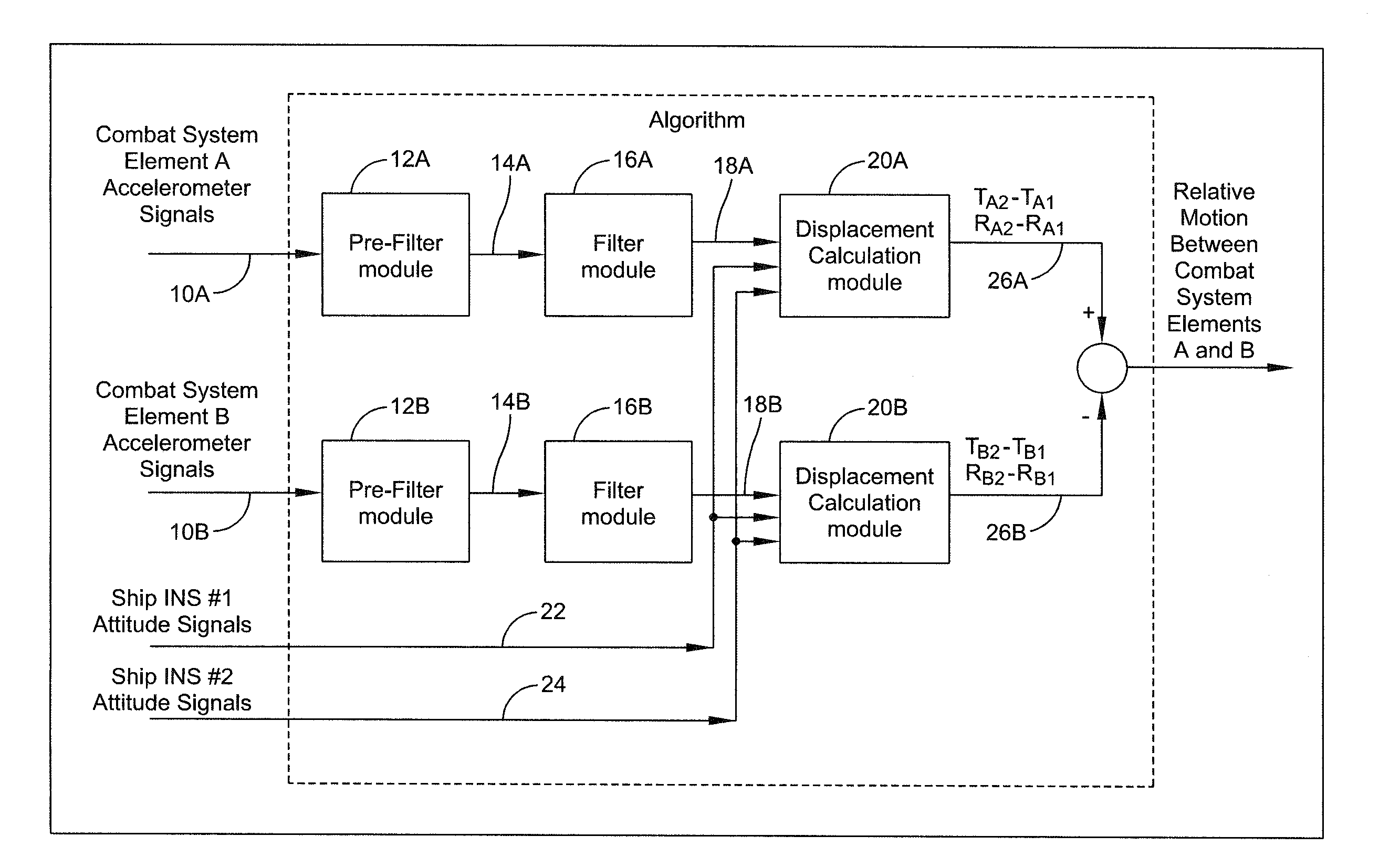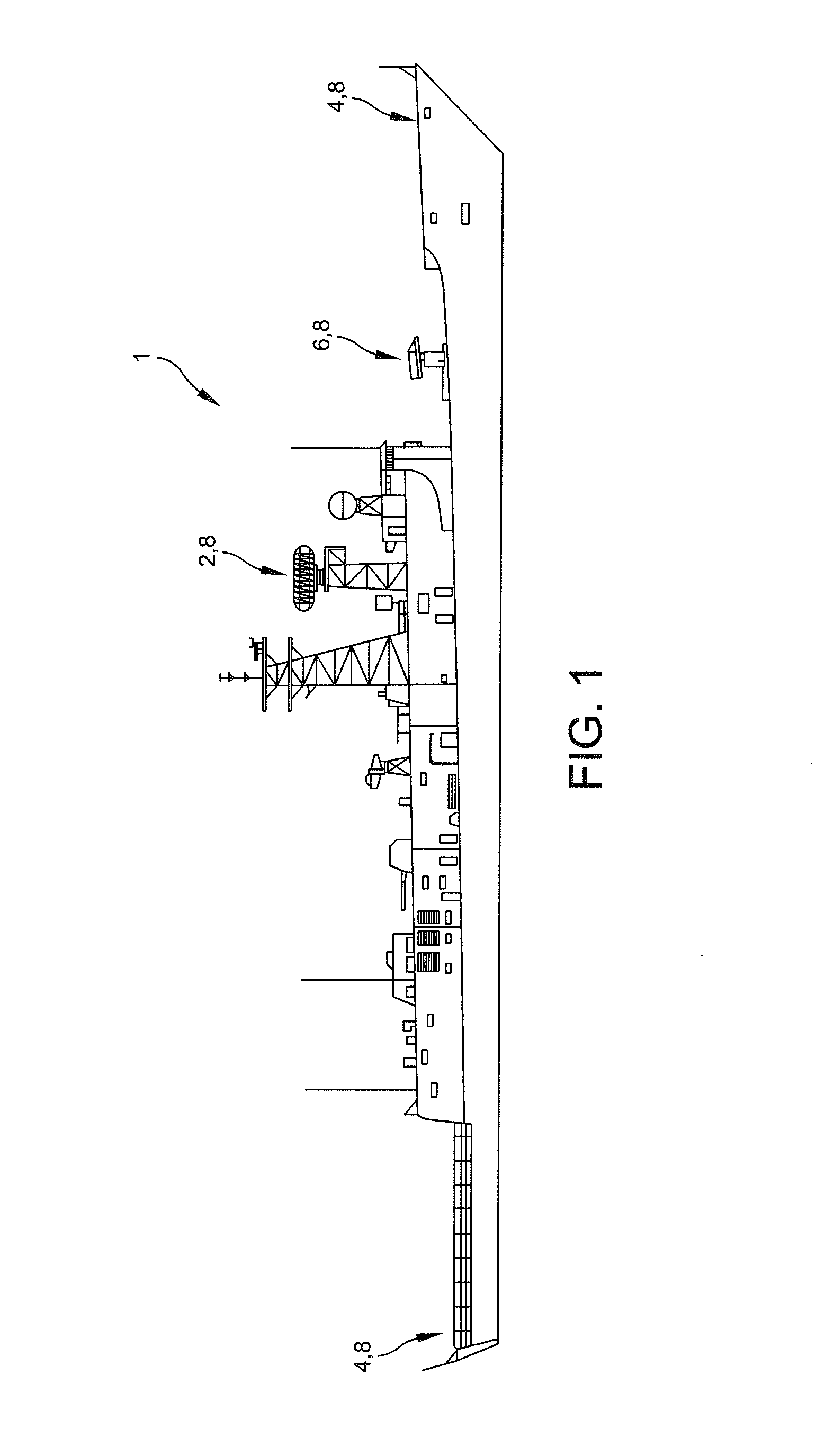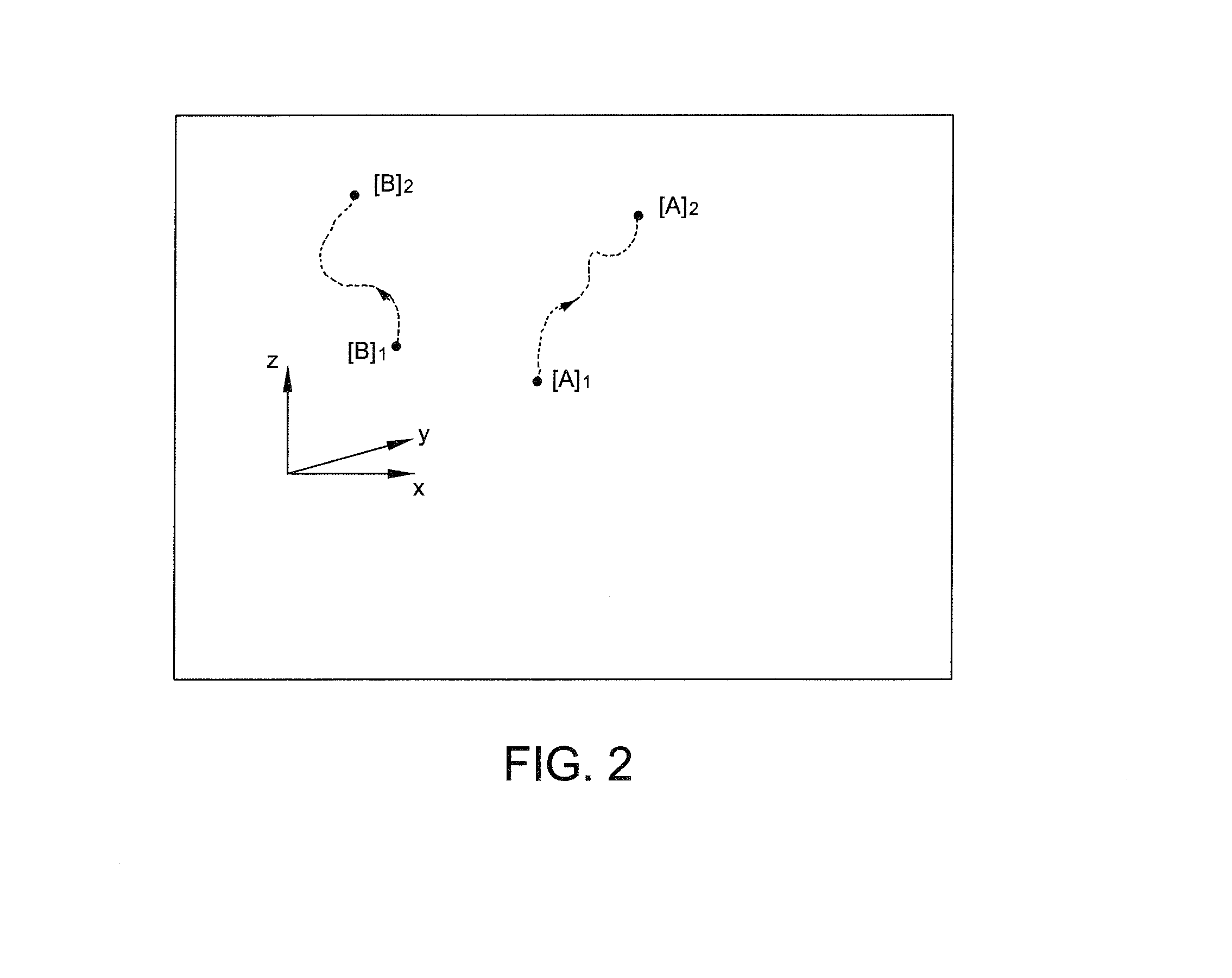Method for determining relative motion using accelerometer data
a technology of accelerometer and relative motion, applied in the direction of vehicle position/course/altitude control, using reradiation, instruments, etc., can solve the problems of relative motion, deformation of the hull structure of the ship, and introduction of errors into the targeting information provided to the weapons system
- Summary
- Abstract
- Description
- Claims
- Application Information
AI Technical Summary
Benefits of technology
Problems solved by technology
Method used
Image
Examples
Embodiment Construction
[0018]The invention is a system and method for determining relative motion between combat system elements positioned on a naval vessel 1, such as that illustrated in FIG. 1. The combat system elements may comprise radar systems 2, forward and aft inertial navigation system (INS) sensors 4, and weapons systems 6. “Relative motion” is described in relation to FIG. 2, in which a pair of combat system elements are labeled “A” and “B.” These elements can be any of the aforementioned components (radar, INS sensors, weaponry, etc.) The translational and rotational positions of combat system elements A and B at time t1 may be designated [A]1 and [B]1, while the translational and rotational positions of those same elements at time T2 may be designated [A]2 and [B]2. The positions may be further defined as follows:
[A]1=[TA1,RA1], where:
TA1=[tax1,tay1,taz1] (Translational position)
RA1=[rax1,ray1,raz1] (Rotational position)
[0019]Thus defined, the relative motion between combat system elements A...
PUM
 Login to View More
Login to View More Abstract
Description
Claims
Application Information
 Login to View More
Login to View More - R&D
- Intellectual Property
- Life Sciences
- Materials
- Tech Scout
- Unparalleled Data Quality
- Higher Quality Content
- 60% Fewer Hallucinations
Browse by: Latest US Patents, China's latest patents, Technical Efficacy Thesaurus, Application Domain, Technology Topic, Popular Technical Reports.
© 2025 PatSnap. All rights reserved.Legal|Privacy policy|Modern Slavery Act Transparency Statement|Sitemap|About US| Contact US: help@patsnap.com



